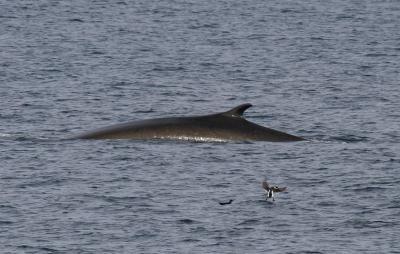The Bering Strait is famous as a land bridge that prehistoric humans used to travel from Russia to North America. Today, the waterway is 58 miles wide and maximum 160 feet deep, with about one-third of its span in U.S. waters and the rest in Russia. The two coasts are quite different, Stafford said, which makes the international collaboration essential to understanding the full environment.
A recent paper by Stafford and other scientists includes visual sightings of killer whales, a quieter southern-dwelling whale, just north of the strait in the southern Chukchi Sea. Killer whales are now seen fairly regularly in this area, which is being considered for oil and gas exploration.
"The Arctic areas are changing," Stafford said. "They are becoming more friendly to sub-Arctic species, and we don't know how that will impact Arctic whales. Will they be competitors for food? Will they be competitors for habitat? Will they be competitors for acoustic space, for instance these humpbacks yapping all the time in the same frequency band that bowheads use to communicate? We just don't know."
Stafford supports the idea of slowing ship speeds in the Bering Strait, reducing motor noise and the chance of ship strikes.
Another suggestion to protect whales builds on tagging work showing that bowhead whales tend to travel up the U.S. side on the way north in the spring and on the Russian side on their way back in the fall. The proposal suggests that ships follow the American coast in the fall and the Russian coast in the spring to reduce interactions between ships and whales.
Still to be explored is whether the increased whale travel through the region is due to rising whale populations, expanded ranges, or both. Logbooks from Soviet whaling ships in the mid-to-late 20th century report sub-Arctic whales in the region, but none were seen from about 1980 to 2010.
"The question is, are these whale populations recovering and so they're reoccupying former habitat, or are they actually invading the Arctic because they can, because there is less seasonal sea ice?" Stafford said.

A fin whale is shown breaching the water's surface.
(Photo Credit: Kate Stafford, UW)
Source: University of Washington